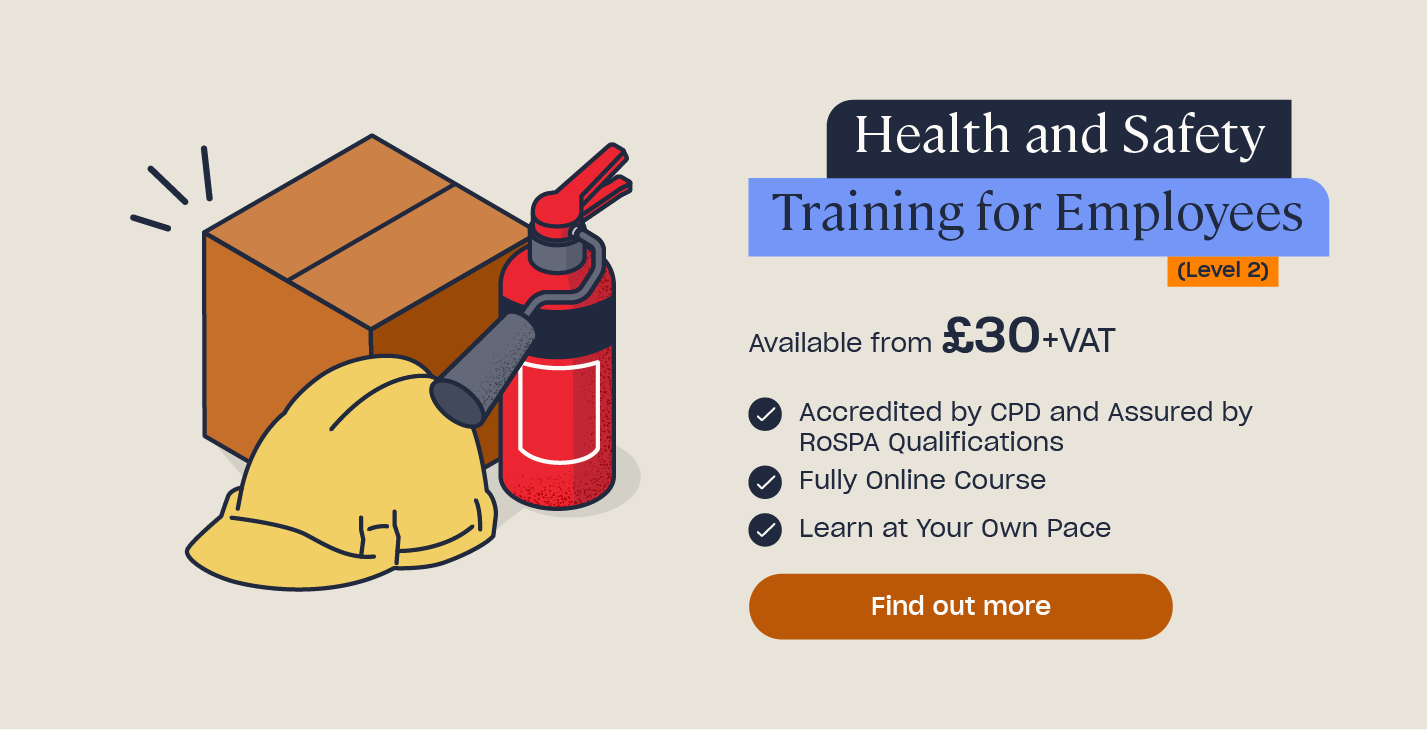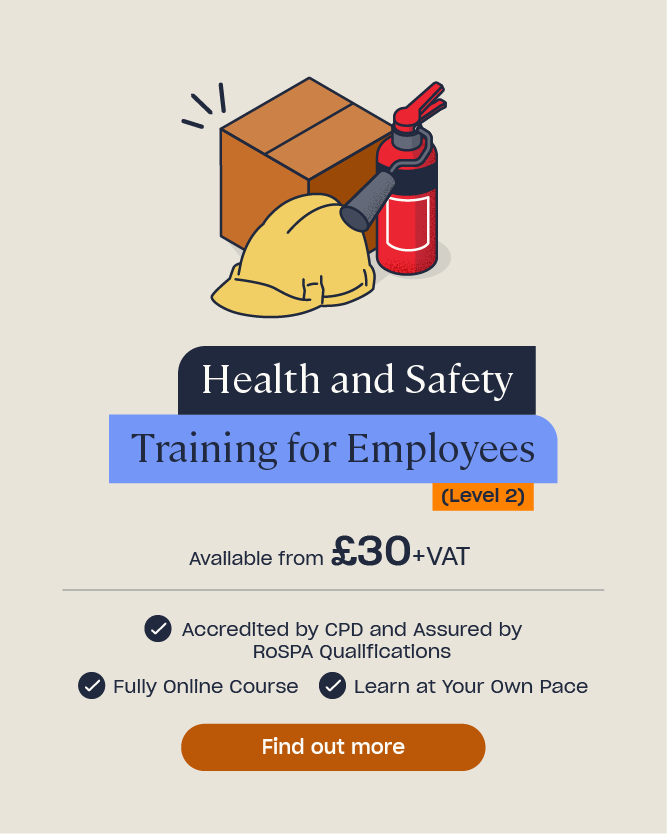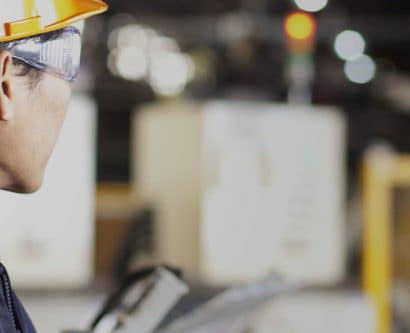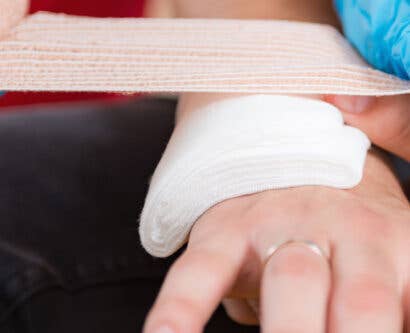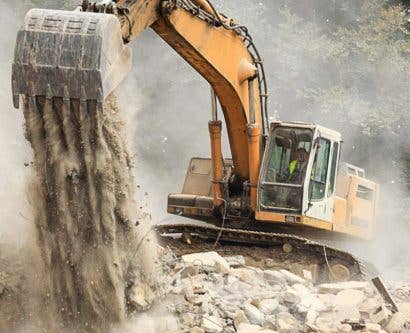How to Manage Health & Safety on Your Farm
Large items of machinery, poor weather working conditions, and the nature of the job all make farming one of the most dangerous industries. The HSE report that, in 2022/23, farming and agriculture-related activities killed 27 people. However, it isn’t only farmers who are at risk: the general public can also be at risk of farming activities, including children.
This is why, if you work on a farm, it’s essential that you adhere to health and safety procedures. You must be aware of the hazards on your farm and how to prevent them.
What are the Main Hazards on a Farm?
Agriculture has the highest fatality rate of all main industry sectors, so it’s essential that everyone who works in the industry knows the risks.
Manual Handling
The Manual Handling Operations Regulations 1992 define manual handling as ‘…any transporting or supporting of a load (including the lifting, putting down, pushing, pulling, carrying or moving thereof) by hand or bodily force.’ The weight of the load, the size and shape of it, the level of grip, the way that you handle the load and how long for, can all affect safety.
There are many farming activities included in this definition, from using heavy tools and machinery to carrying crops. Manual handling is dangerous if you don’t follow correct procedures, and can lead to a range of health complications like musculoskeletal disorders (MSDs).
How to Reduce the Risk
In order to reduce this risk, it’s essential that everyone who works in the farming industry has manual handling training. You should know what position to adopt and which factors to consider before you begin manual handling.
Before carrying out a manual handling activity, you should assess and plan it, taking TILE into account. Consider whether manual handling can be eliminated completely, such as by using mechanised systems. If it can’t, then think of alternative ways to carry out the activity. For example, splitting a 40kg load into four 10kg loads.
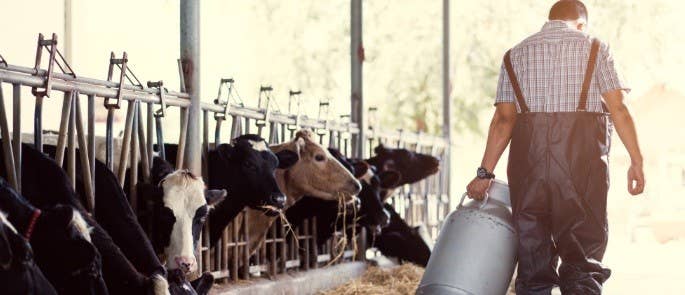
Working at Height
By law, you must properly plan and supervise any work at height. Only people who are competent to work at height should do so. Falls are the second highest cause of death in agriculture, with an average of 8 people dying every year from a fall from height, and even more injured. Falls can happen from roofs, ladders, vehicles, bale stacks, on work platforms or on fork-lift trucks, and any other environment at height.
Working at height also poses a risk to public safety. If you’re working at height and something falls, it could potentially hit somebody who is close by or passing. For example, if you’re stacking bales onto a trailer, if one falls then this could kill somebody. Always ensure the area is clear when unloading and stacking.
How to Reduce the Risk
To reduce the risk, the law says that you should avoid working at height where you can. If you can’t, then you should try to prevent falls and use equipment that minimises the distance and consequences of a fall, such as a harness. You should ensure that you have received correct training before you start any work at height and feel competent to do so. Use any machinery to help you reduce the need to work at height and the risk of injury.
Lifting Equipment (LOLER)
Lifting operations present a number of risks. Anybody who works with equipment or who is nearby is at risk of injury if lifting procedures are unsafe. Lifting equipment covers any work equipment that’s used for lifting and lowering loads, such as materials or animals. This can include hoists, cranes, power shovels, forklift trucks, and working platforms.
Incorrect use of equipment can lead to:
- Hazards related to the loads, such as loads falling because the wrong type of sling was used.
- Hazards from moving vehicles, such as being struck by a forklift or tractor.
- Falling from lifting equipment.
- Contact with overhead electrical cables (if the lifting equipment makes contact with them).
How to Reduce the Risk
Risk assessments are essential to reduce the risk from lifting equipment. They must consider the hazards for each lifting operation, who would be harmed by this hazard, and how to reduce the hazard. Everybody who uses lifting equipment should be trained in the equipment and be confident that they know how to use it safely.

Asbestos
Many farm buildings have asbestos-containing materials (ACMs) in them, such as asbestos-cement roof sheets, cladding, and rainwater gutters. Asbestos is most hazardous when it’s friable, which means that it’s easily crumbled by hand. Many ACMs aren’t generally harmful unless they release dust or fibres into the air, where they can be inhaled or ingested. Asbestos containing ceiling tiles, floor tiles, etc. don’t release asbestos fibres unless they are damaged or disturbed. However, if a ceiling tile gets broken, for example, then that would release fibres into the air. Water damage, ageing, drilling, grinding, cutting, and sawing can break the materials down and also release the fibres.
Our bodies can’t remove asbestos fibres once they’re in our lungs or body tissue. As a result, they remain in our bodies and lead to health complications such as asbestosis, lung cancer, and mesothelioma.
How to Reduce the Risk
Under the Control of Asbestos Regulations 2012, farm owners must assess the presence of any asbestos and the condition of it. According to the Health and Safety Executive, well-sealed and undamaged asbestos is usually best left alone, but it is better to remove them if they are damaged. Don’t do this yourself – asbestos is dangerous and you should always consult a specialist before you disturb any asbestos-containing materials. Everybody on the farm needs to be aware of the presence of asbestos and the possibility of unidentified ACMs.
Electricity
Contact with electricity can lead to damaged equipment, burns, serious injury, and death. In the agriculture and farming industry, many injuries are caused because of contact with overhead power lines. Farming machinery can be very tall, which makes the chance of a cable strike likely. Further hazards include poorly maintained hand-held equipment, faulty machinery and extension cables, and poorly installed equipment. These can cause fires, which can lead to a loss of buildings, equipment, and livestock, as well as death.
How to Reduce the Risk
You need to carefully plan any work near overhead power lines to prevent contact. You also need to regularly inspect all equipment, including both machinery and hand-held devices, to ensure that it’s safe to use. Never use equipment if you’re unsure whether it’s safe or not. Always unplug and isolate any appliances before cleaning them.
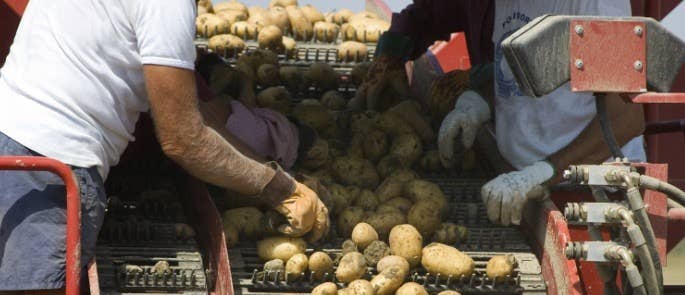
Livestock
One of the biggest risks in agriculture is livestock. Being trampled or attacked by an animal is common on farms, especially when an animal has young that it’s trying to protect. In August 2018, a farmer was found dead at Pinstraw Farm in Sussex. The police concluded that he had been trampled to death by his own livestock after a bull, which was born and reared on the farm, was found next to his body.
Animals present a high level of risk, even if they don’t attack. Playful bulls, cows, sheep, or pigs can kill or severely injure, and diseases from animals can be passed onto humans. Child safety on farms is at risk when it comes to livestock, as their playful and inquisitive natures make them keen to explore and play without knowing the associated dangers.
How to Reduce the Risk
It’s your responsibility to keep yourself, anybody who works for you, and the public safe from livestock. Ensure that members of the public can’t enter any yard or pen that dangerous animals occupy. You should also make sure that they don’t look after any animals without supervision and they don’t have access to any chemical or veterinary medicines.
If you have fields on your farm that have rights of way or permitted public access, then make sure:
- You don’t keep bulls of dairy breeds in fields where there are footpaths.
- You assess the temperament of all cattle in those fields. Remove any from the group that are aggressive or may be aggressive because of illness or protecting their young.
- Suitable signs are displayed to warn the public of dangers.
Additionally, you should consider whether you need to put fencing up for rights of way so that they can’t be accessed by cattle.

Young Workers
The law states that no child under 13 should drive or ride on tractors or other machines used in agriculture. Furthermore, children under 16 must not drive, operate, or help to operate most of the machinery. It’s also illegal and unsafe to carry children under 13 in the cab of an agricultural vehicle. Health and Safety Matters report that a 9 year old boy sustained a broken leg and open wound – which required a skin graft – when his leg became trapped between the ground and the roll over protection bars on an ATV. He was travelling as a passenger in the ATV, which was being driven by a 13 year old, when it overturned and trapped his leg. The HSE found that the cause of the overturn was most likely due to the fact that the 13 year old boy had no formal training and was inexperienced driving.
How to Reduce the Risk
You need to ensure that you don’t allow any young workers on your farm to be doing something they shouldn’t be for their age, such as having a 14 year old drive a tractor. You must make sure that you take young workers into account in your risk assessment, keeping in mind the fact that they do not have much experience.
Lone Workers
While your farm may have lots of people working on it, there may be many times when you are working by yourself. Lone working has a number of physical hazards associated with it as well as loneliness and mental health difficulties.
How to Reduce the Risk
If you are a lone worker, then it’s essential that you consider a number of factors in order to keep yourself safe. This involves checking your own capability, individual ability and health, the risks that are present to you (such as the risks from machinery you’re using), and how you will alert someone in case of an emergency.
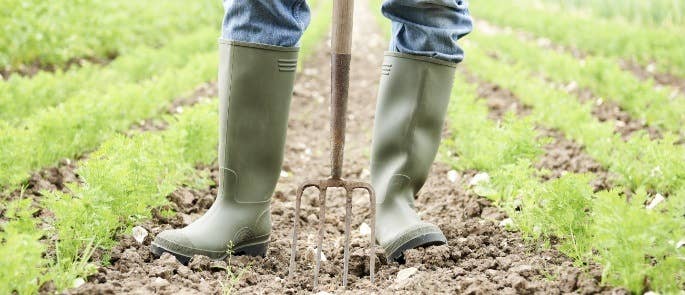
Our Top 10 Farm Safety Tips
Use this farm safety checklist to ensure that your farm is as safe to yourself, your staff, and the public as much as possible.
- Carry out a risk assessment on your farm. Make sure you recognise who might be harmed by each hazard and then implement suitable control measures to reduce the risk of harm.
- Ensure that all staff are properly trained in the equipment they use, such as lifting equipment and dangerous machinery.
- Don’t allow anyone to operate tools and machinery if they are underage.
- If you do have young workers operating machinery, make sure they are supervised.
- Ensure staff have appropriate general health and safety training, such as manual handling training.
- Make sure that the public, especially children, can’t enter a yard or pen that contains dangerous animals.
- Assess the temperament of cattle in fields where there’s public access or rights of way.
- Check all electrical appliances before you use them to ensure they’re in good, safe working order.
- Get a specialist to check for asbestos on your farm and ask them what you should do about it. Never check or disturb it yourself.
- Try to reduce the need for a dangerous activity, such as working at height, as much as you can. If you can’t remove the activity then implement control measures to reduce the risk, such as a harness.
Large pieces of equipment, livestock, and dangerous machinery all make the agricultural industry a very dangerous environment. As a result, it’s essential that you take health and safety on farms seriously and follow the correct procedures to keep yourself, your staff, and the public safe.
What to Read Next:
- Fire Risk Assessment Template
- LOLER Inspection Checklist Sheet
- Health and Safety in the Workplace Training


